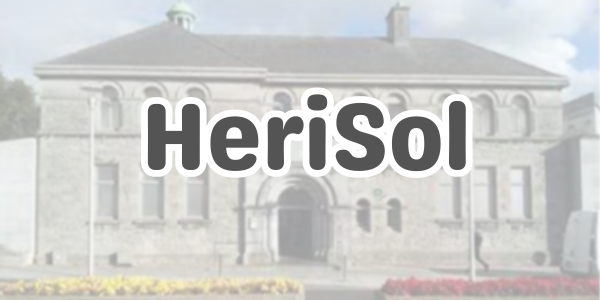
Project Reference Number: TBC
Duration: 36 months
Start Date: 01/12/2024
End Date: 01/12/2027
TUS Project Budget: €200,000
Total Project Budget: TBC
Type of Model Grant Agreement: The Clean Energy Transition Partnership CETP-2023-00326
Project Summary
The overall objective of HeriSol is to demonstrate the innovative integration of clean energy solutions into architectural heritage, converting heritage buildings from consumers to prosumers and thus into active elements of the energy systems. While the core of HeriSol is about the integration of clean energy technologies into the built environment, other main objectives are also considered:
- Preserving the aesthetical architectural and cultural heritage with the integration of coloured building-integrated photovoltaics (BIPV), bio-based insulation and adhesive materials as well as micro heat pumps.
- Development, planning and demonstration will be supported by and monitored with digital technologies, i.e. BIM, Digital Twins, LCA and visualisation.
- Social integration, showing how residents, users and visitors of a building complex representing different gender, age, socio-economic or cultural background and perspectives co-create clean energy solutions together. This inclusion is important to create social acceptance and strengthens the importance of energy community.
- Demonstrate the regulatory integration by actively identifying legal barriers and establishing regulatory sandboxes. This will be carried out on historical, hard-to-retrofit buildings of different types as demonstration sites, combining the European cultural heritage with sustainability objectives aligned with the principles of New European Bauhaus: aesthetics, sustainability, and inclusion.
The demonstration sites includes The Terrassenhaussiedlung Graz, Austria (a UNESCO residential complex), University of Latvia, Limerick City Art Gallery and San Telmo Palace (Government administration) Sevilla, Spain.
HeriSol contributes to a portfolio of new solutions by focusing on old, historical and special (heritage) buildings, residential and non-residential, and their physical, technical and aesthetical integration, demonstrated for different climate zones (Oceanic, Mediterranean, Continental, “Alpine”). This will turn heritage buildings from passive pure energy consumers into prosumers. By addressing and overcoming regulatory and aesthetical restrictions with the help of HeriSol, heritage buildings can take an active role in the future energy landscape. Against this background, by analysing current frameworks, identifying EU best practices, and engaging stakeholders, the project will deliver actionable recommendations for policy reform and effective retrofitting strategies. Training and awareness efforts will further support the adoption of these best practices, contributing to the long-term goal of a highly energy-efficient, decarbonized residential building stock by 2050.
TUS (SDRI) Activities
TUS SDRI is focused on overseeing the quantitative and qualitative research on existing prosumer solutions for heritage buildings (barriers, gaps and challenges), comparison of legal frameworks across the EU and proposition of new solutions for heritage buildings. Digital Twins will be developed to assess energy and carbon performance (including IEQ) and develop planning tools and BIM for materials such as WLCA and LCC/CBA. TUS SDRI is also overseeing the works carried out at the Limerick City Gallery for the whole life carbon assessment, – embodied carbon and operational carbon emissions- to be verified in the digital twin developed by CEMOSA.
TUS PRISM RI is focused on the development and testing of bio-based materials and systems for solid walls and mounting the Morpho BIPV on slate roofs at the demonstration sites, through further development of the Mycelium based polymers.
Project Partners
- Fraunhofer ISE
- WEG St.Peter-Hauptstraße
- University of Latvia
- Technical University of the Shannon: Midland Midwest
- Institut für Wohnbauforschung
- Austria University of Applied Sciences Burgenland
- CEMOSA
- Ertex
- Österreichische Technologie Plattform Photovoltaik
- Temicon
- University of Graz
Project Coordinator
Name: Elisabeth O’Brien
Email: elisabeth.obrien@tus.ie
Further Information
Project website currently under construction
Project Factsheet



